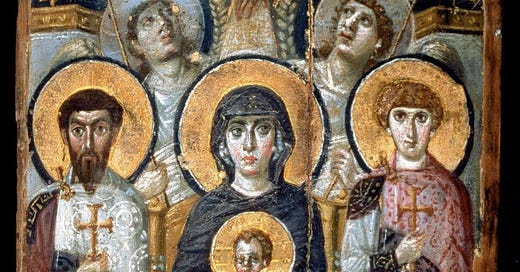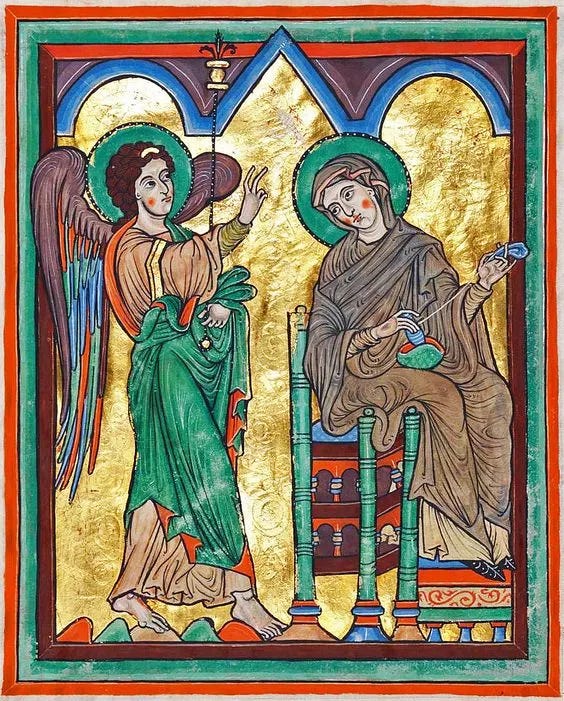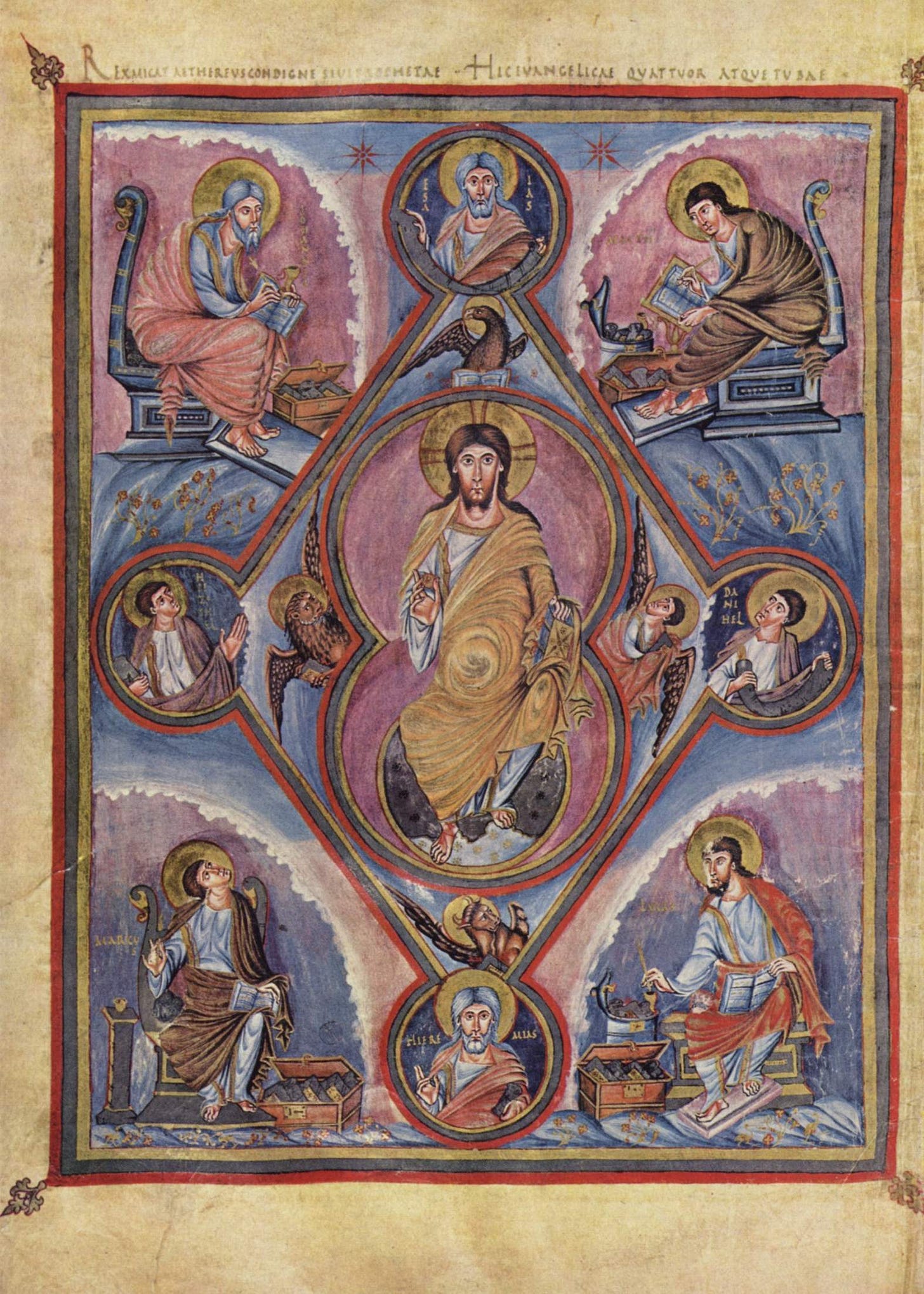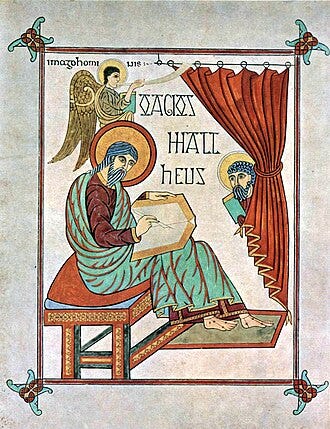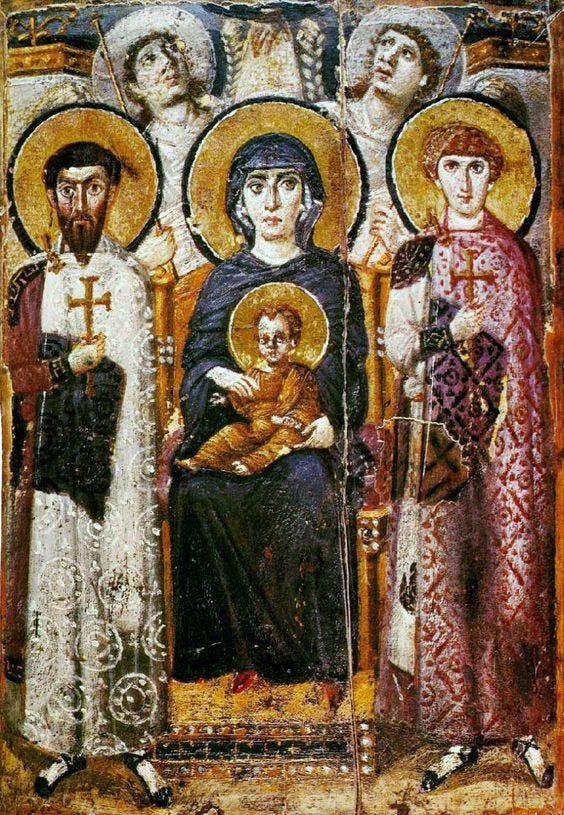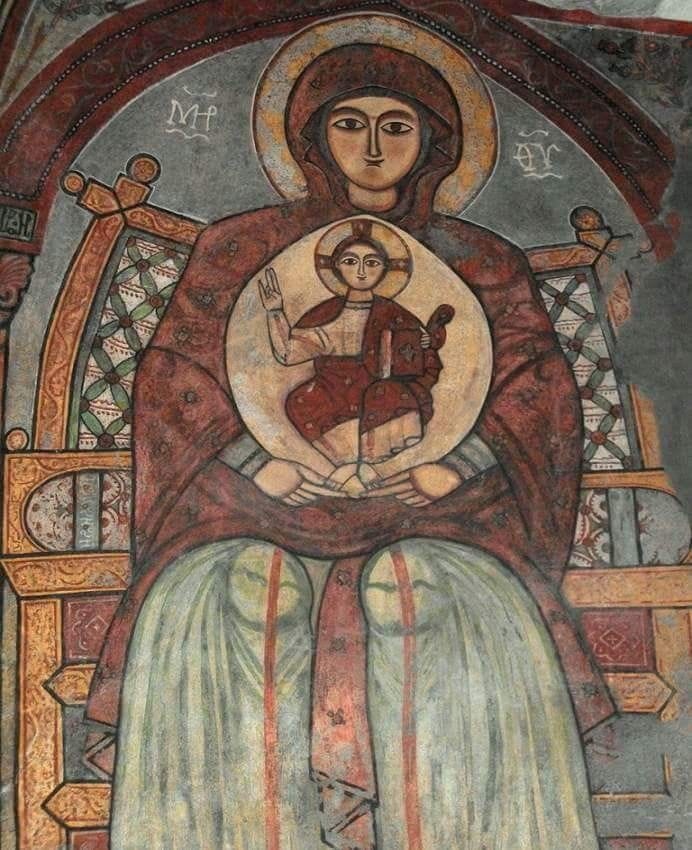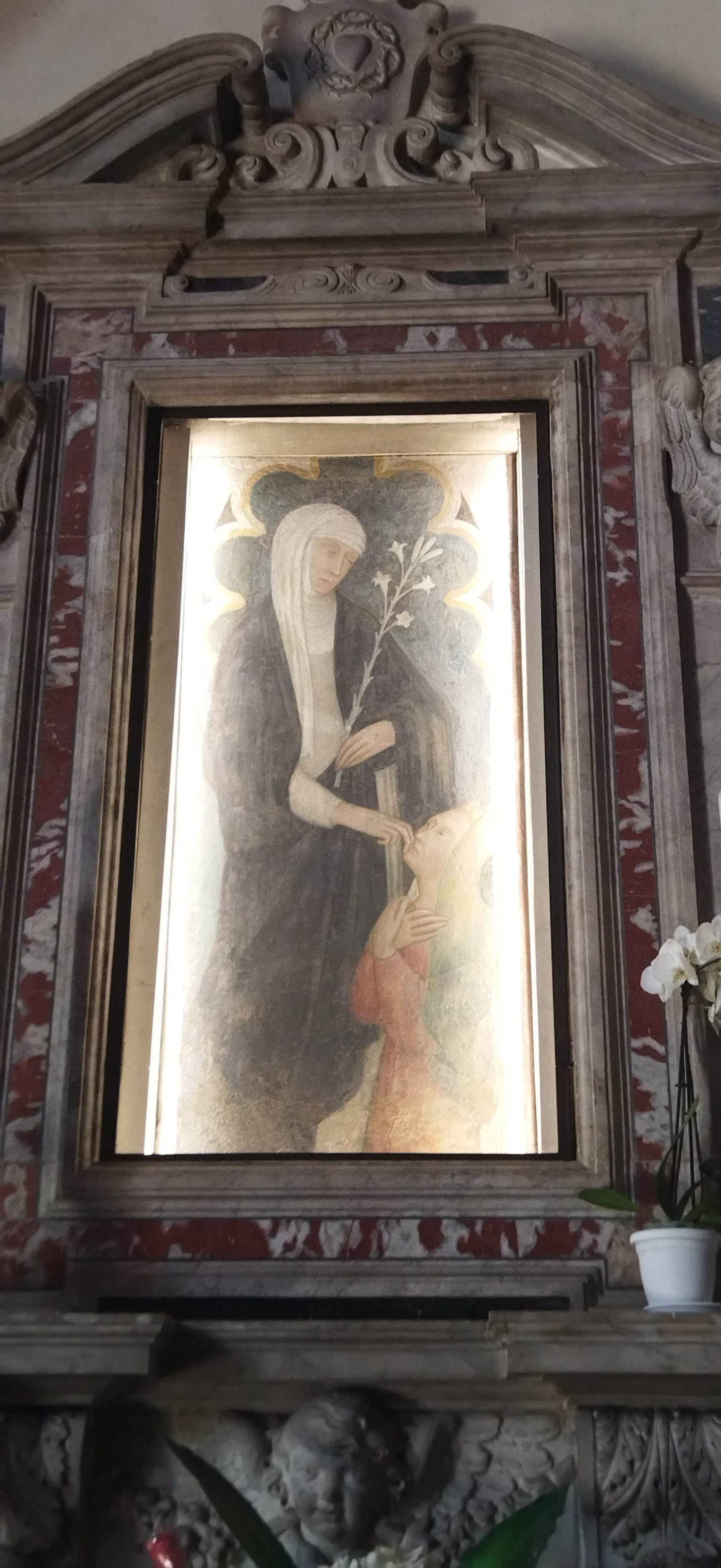(Saturday) Goodie Bag for July 20: Romanesque or what? quiz answers
Below the fold: video clips from Siena - the family home of St. Catherine
As I said yesterday, we’re getting into the hot season where everything we do feels like swimming through warm molasses, so things are going to be a little truncated around here for the next few weeks. I thought a shortened version of the Goodie Bag post was needed, though.
Book club for paid members
The early mornings are very nice. After the usual morning summer chores - feed animals, water plants, tidy the workroom (&clean my desk which was in a shocking condition!) wash a few dishes, take a walk before it gets too hot - I was happy to spend an hour on the terrace with our book. Like all good spiritual writing, it really does reward very slow reading. And that slow meditative reading is what Benedictines call “lectio”. We’ll talk about that.
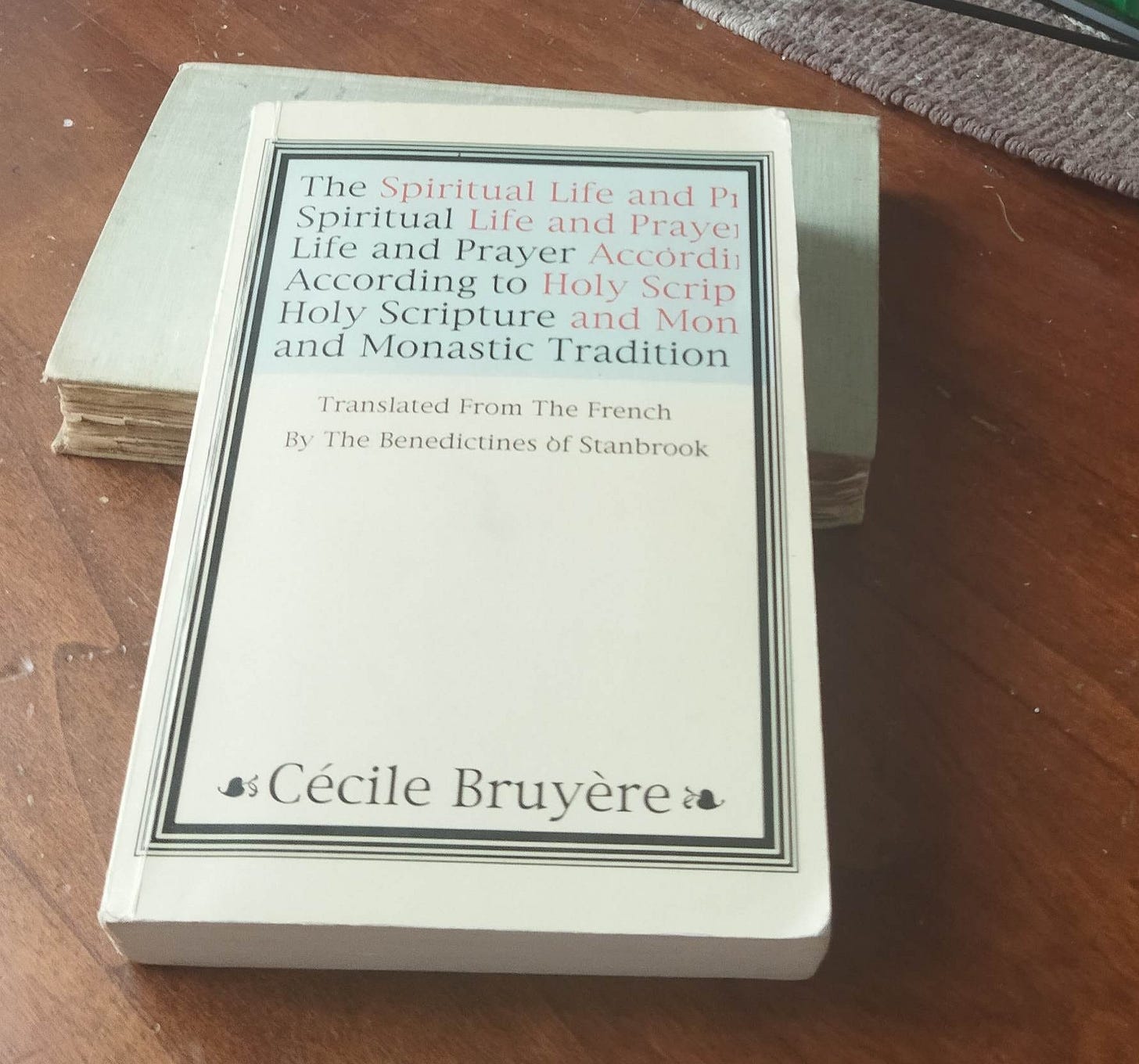
I’ve also been looking at the beautiful “Publican’s Prayer Book” my Melkite (Byzz-Catholic) friend Dale Price sent me, and there’s a lot to think about. I asked the other day what “holiness” actually means, and how do you actually get there? We hear regularly about this, but are given almost nothing concrete about it.
Today I found a very succinct, and deeply compelling, explanation:
Sanctification, a total transformation is, “the gift of Divine love poured into our hearts by the Holy Spirit…”
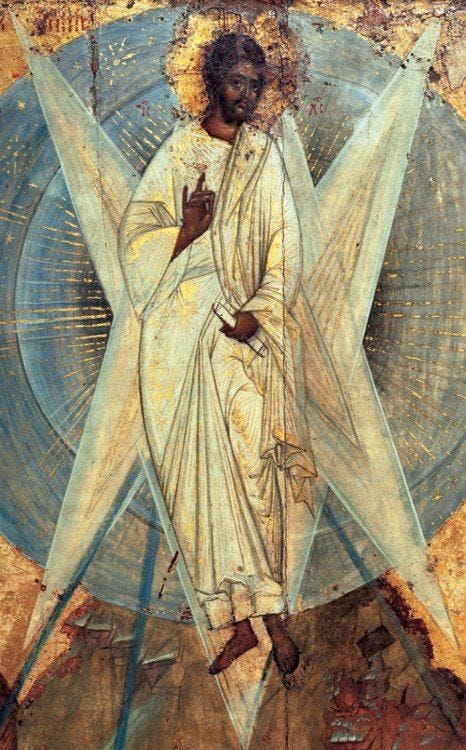
“In prayer, heart speaks to Heart and as we commune with God, the consuming fire of Divine love purifies our heart from all sin and defilement and transforms us more and more into His likeness. Like Moses on Mount Sinai, whose face became radiant with Divine glory as God spoke with him (Ex 34:29) so, too, in prayer, “we all… reflecting as in a mirror the glory of the Lord, are being transfigured into His very image, from glory to glory by the Spirit of the Lord.” (2 Cor 3:18)
St. John Chrysostom: prayer should be “a constant state which endures by night and day…”
St. Basil the Great: “Let the time for prayer be the whole of life…”
~
Subscribe below to join the group; live chats are Mondays, but if you’re subscribed and want to join us, the nice thing about the chat is you can chime in any time. We’ve got a lot of time zones to contend with after all.
The Sacred Images Project is a reader-supported publication where we talk about Christian sacred art, the first 1200 years. It’s my full time job, but it’s still not bringing a full time income, so I can’t yet provide all the things I want to and am planning for. You can subscribe for free to get one and a half posts a week.
For $9/month you also get the second half of the Goodie Bag, plus a weekly paywalled in-depth article on this great sacred patrimony, plus extras like downloadable exclusive images, ebooks, mini-courses, photos, videos and podcasts (in the works).
If you would prefer to set up a recurring donation in an amount of your choice, or make a one-off contribution, you can do that at my studio blog:
Romanesque or what? Quiz answers
Meanwhile, it’s been two Fridays since we’ve had a proper Goodie Bag post. We’ll start with the quiz answers, and as usual you all did really well; and the choices were tricky this time! So, we’ll take a little closer than usual look at the images.
Bit of a trick question, this one, or at least difficult to nail down because it has stylistic elements of all our choices. BUT! it has a couple of tell-tale elements. First thing I noticed was the bright red dot on the cheeks of the figures, which is always a dead give-away for the Romanesque, as is the geometric style of the figures, especially the faces. The drapery also shows a touch of the “damp fold” style, where it looks like the fabric is stuck to the figures and the drapery is rendered in simple lines with no modelling (that is, 3-Dness). However, the flow of the drapery is distinctly leaning towards early Gothic; while still being stylised and linear, it also looks like real fabric hanging in space.
It could be mistaken for Carolingian, because of the very swirly drapery style, but I really threw that one in there as a red-herring. We’re going to start talking about Carolingian on Monday, and I wanted to drop a hint.
In fact, this Annunciation comes from a manuscript called the Speyerer Evangelistar which you can browse at this link. It is thought to have been created in Trier, possibly, about 1220, which puts it chronologically in the Gothic period. But of course styles took a while to develop and developed slower or faster in different places. This image has elements of both, which makes it a transitional period (in Germany, up to about 1250) between late Romanesque and early Gothic.
~
This one was absolutely 100% a trick question: it’s Carolingian. But if you look at the way the drapery is rendered, in those swirling lines, it really does resemble the early Gothic style of the one above.
It’s from the Bible de Vivien, one of the more important intact Carolingian Bibles, commissioned by Count Vivian of Tours in 845 as a gift to Charles the Bald when the king visited the Abbey of St. Martin of Tours.
One of the most interesting aspects of Carolingian - between the 8th and 9th centuries - is its blending of two very distant elements, Classical Rome and the Insular art of the British Isles, like the Book of Kells and the Lindisfarne Gospels.
Carolingian manuscript illustrations are more naturalistic and show Classical proportions for human figures. The figures have a sense of volume, natural proportions. They also feature Classical architectural elements like columns and Roman arches to frame illustrations, and show a more natural linear perspective.
They also combine the bright colours and intricate, interlaced patterns of Insular art with the more formal and structured designs of classical antiquity. One of the big tells is the presence of lots of gold leaf.
You guys are going to love the Carolingian!
~
You nailed this one to the floor: it’s a classic Russian Byzantine Hodegetria.
~
For this, both Constantinopolitan Byzantine and Romano-Egyptian were acceptable answers, since it shows elements from iconography at a time when Egypt was influential in the development of Christian art. So I’d say this is another one nailed to the floor in a single thwack.
This particular Maestà is quite important; it’s one of the oldest surviving Byzantine icons. It was painted in encaustic - using hot wax as the medium - probably in Constantinople, and was likely a royal gift of the emperor to the monastery of St. Catherine in Sinai, Egypt. As with the Sinai Pantocrator, this made it too remote for the iconoclasts to get at, and it is thought to date to the 6th or early 7th century, so is a rare survivor of early, pre-iconoclasm iconography.
~
Yep, spot on. Well done. This is about the most Egyptian-Coptic-looking Egyptian Coptic icon imaginable. The give-aways are always the circularity (is that a word?) of the forms; everything is based on circles. The forms are all very simplified, stylised and geometric, and have flat perspective, but at the same time show the normal Byzantine elements like hieratic frontality and mandorlas and halos and all that.
The direct frontal view creates a sense of importance and commands attention, as though we are attending a formal royal court. The focus isn't on depicting a specific person's physical appearance, but rather on conveying the spiritual realities behind natural appearances.
Differing from later Byzantine conventions, Egyptian Coptic Byzantine shows the figures looking very directly, with none of the more naturalistic slight turning of the head that “invites the viewer” in. The thing that always strikes you about it is it seems very confrontational, and the gaze is direct and compelling, with large, round eyes, heavily outlined and opened very wide.

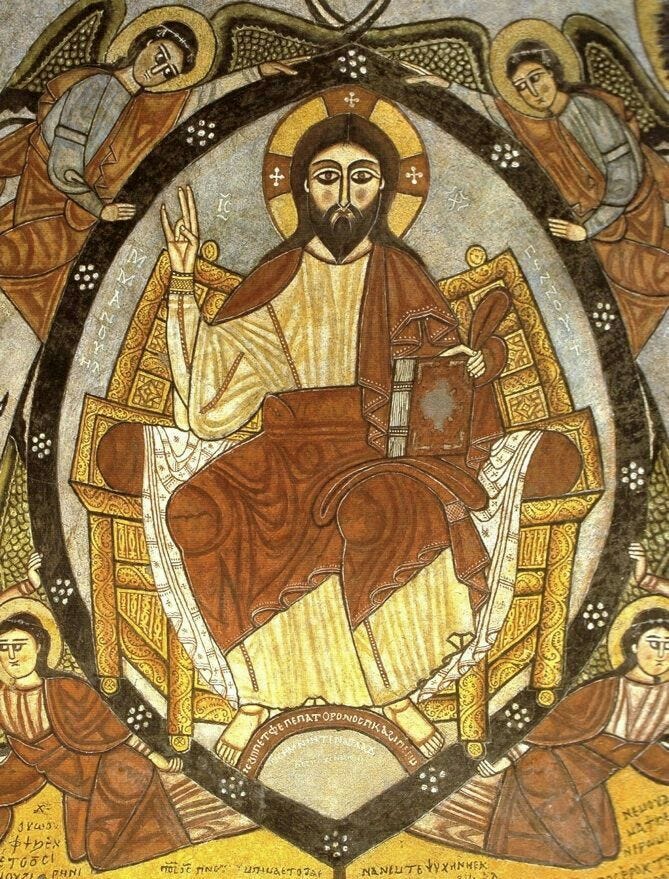
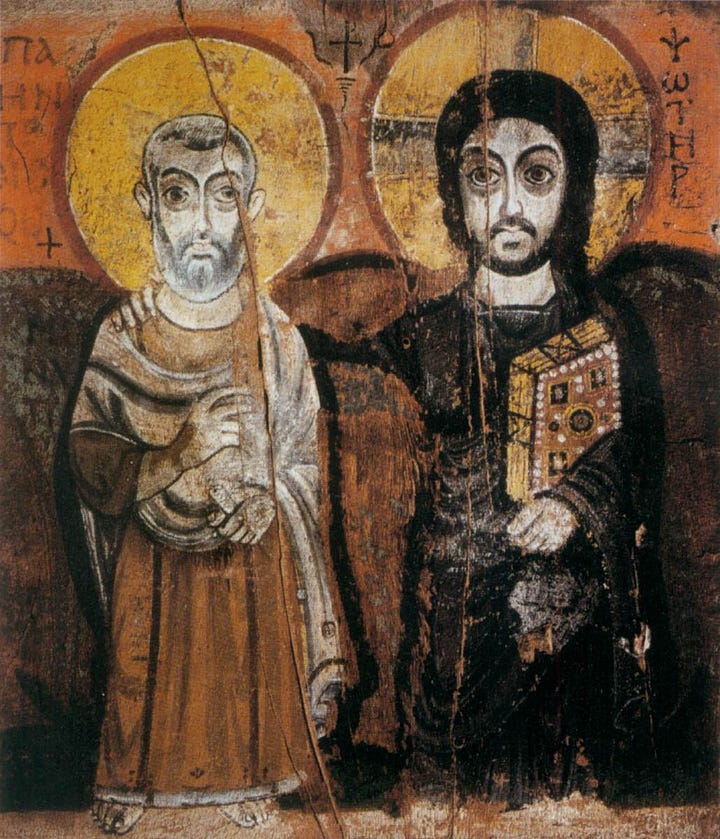
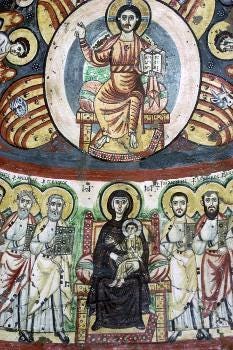
I gotta say, the Coptic style sort of put me off at first, but it’s really growing on me.
You can read more about the Egyptian influence on Christian art here:
Out of Egypt: the iconographic tradition and the first great empire
and here
The Fayum mummies and Amarna princesses
Here’s my very first podcast appearance. I think I gibbered incomprehensibly at first, but got going when we talked about what’s wrong with modern civilisation.
Join us below the fold for some video clips and pics from our day trip to Siena last week.

